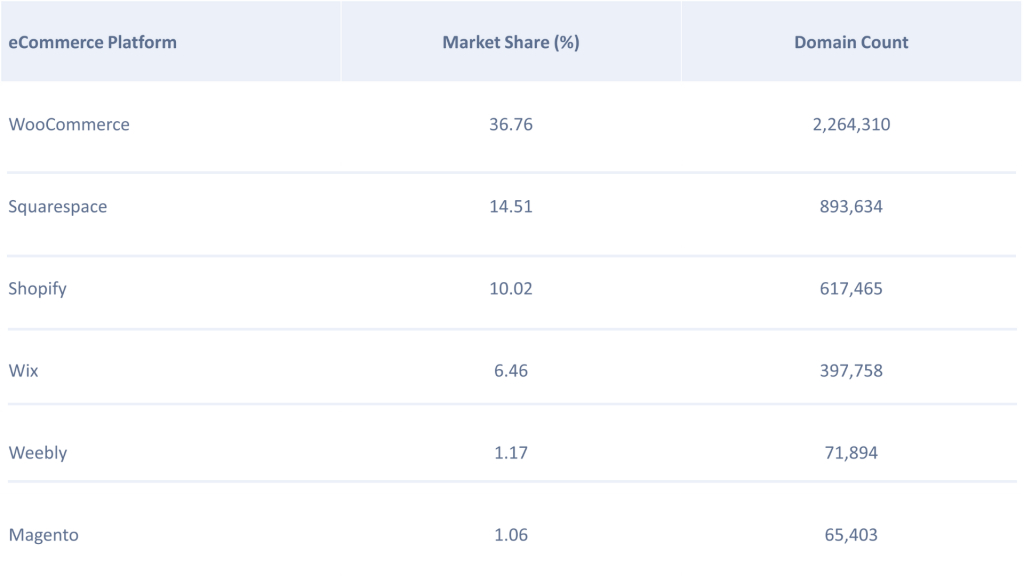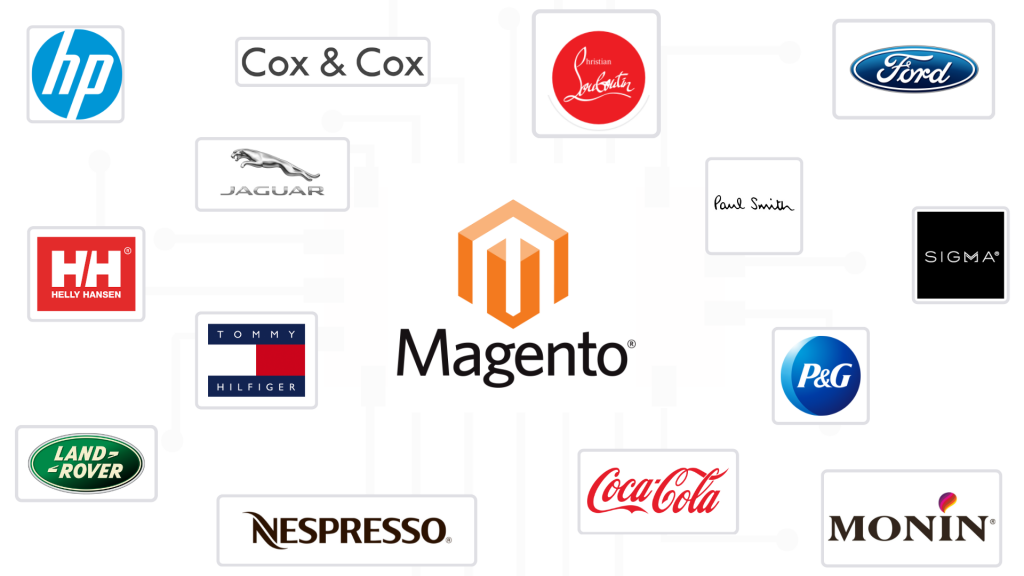Websites and apps have become the bread and butter for many. This is especially true for eCommerce businesses that are connecting with their customers across the globe through these medium.
With time, it has also become easier to build a website and make an app with DIY tools. Website builders like WordPress, Shopify and Magento and app builders like AppMySite are changing the face of development and dominating the market.
Today, we are here to discuss the market share of Magento in particular. Stay tuned and discover significant statistics and facts related to this popular CMS platform and learn all that you need to know.
Magento: A brief introduction
Magento is essentially an open-source e-commerce platform. It was originally developed by Varien Inc., a US company with headquarters in California, with the help of volunteers and open-source software contributors. Varien published the first release of the software on March 31, 2008.
Roy Rubin, the former CEO of Varien, later sold a share of the company to eBay, which eventually sold the company to Permira.
Thereafter, Magento was acquired by Adobe Inc in May 2018 for USD 1.68 billion and is now known as Adobe Commerce. (It is still widely referred to as Magento, hence we will use the same for ease.)
Now Magento mainly had two distinct classifications: Magento Open Source (also known as Magento Community) and Magento Commerce (also known as Magento Enterprise). Magento Open Source is a non-hosted eCommerce platform and can be downloaded for free. This is essentially limited in features and can be expanded using third party extensions.
On the other hand, Magento Commerce and Magento Commerce Cloud are flagship products with a turnkey offering. These are more premium in their appeal. Depending on the version and extension type, one can also come across names like Magento 2, Magento Commerce 2, etc.
The history of Magento
Officially, the development of Magento was started in early 2007. The first public beta version was released seven months later, on August 31, 2007. Then it was finally launched on March 31, 2008, under the name ‘Bento’.
In the very initial years of its existence, Magento won several accolades and titles like the “Best of Open Source Software Awards” and “SourceForge Community Choice Awards”, not just one but several times.
Magento went on to achieve several milestones after that. For instance, Magento community edition was released on June 24, 2008, enterprise edition was released on April 15, 2009, and Magento mobile was launched on May 28, 2010.
In February 2011, eBay announced an investment in Magento. This was worth a 49% ownership share of the company and eventually it led to complete acquisition that was officially drawn on June 6, 2011. Later, Magento was spun out of eBay by Permira which ultimately led to its acquisition by Adobe on June 19, 2018.
As evident, Magento has had quite an interesting history with lots of bumps on the road. However, the platform has managed to attract a good number of customers and has stayed afloat in the competition.
Market share of Magento on the web
In this section, we will discuss the overall popularity and market share of Magento. Broadly, it can be understood based on the categories below:
Overall market share
As per W3techs, Magento is used by 0.9% of all the websites whose content management system is known. This is 0.6% of all the websites, in general. If we add Adobe systems to this list, the number goes up to 1.7%.
BuiltWith reports that 733,326 websites have been powered with Magento till date (this is based on websites that include location information, hosting data, contact details, etc). Out of these websites, 178,714 are currently live and 432,184 are domains that redirect to these sites.
Furthermore, Wikipedia says that more than 100,000 online stores have been created on Magento and the platform code has been downloaded more than 2.5 million times till date. This highlights that Magento is much more than just a vanilla eCommerce CMS platform.
eCommerce market share
Going by what Wikipedia unveils further, Magento held a 2.32% market share in global e-commerce platforms as of April 2021. In 2019, USD 155 billion worth of goods were sold through systems based on the Magento platform.
Additionally, as per Statista, Magento ranked at the eighth position in its list of top eCommerce platforms and technologies. As per this report, Magento maintained a market share of 2.32% in the year 2021. This was quite close to Shopify and Amazon that had a share of 3.69% and 3.54% respectively.
If we are to look at the current statistics, then as per Datanyze, Magento is currently one among the top ten eCommerce technologies with an eCommerce market share of 1.06% and it is currently powering 65,403 eCommerce websites. As Datanyze keeps its extension like Magento Commerce and Magento 2 separately, one can assume that Magento as a technology is more popular and powerful.
Share among top ranking websites by traffic
Despite having a small share in the CMS market overall, Magento has a quite promising hold among the top-ranking websites by traffic. As per the trends by BuiltWith, the share of Magento stands as follows:
- Share among the top 1 million websites: 8%
- Share among the top 100 thousand websites: 8%
- Share among the top 10 thousand websites:8%
You can also refer to the blog below and understand how Magento compares against other eCommerce CMS platforms when top ranking websites across the web are taken into consideration.
Suggested Read: Global eCommerce market share and platform distribution statistics
Magento vs its competitors
Magento has several competitors in the CMS as well as the eCommerce industry. For instance, as per w3tech, Adobe Systems (parent company of Magento) hold a generic usage share of 1.1% and a CMS-based website market share of 1.6%. This implies that Magento is used by 1.1% of all the websites.
In comparison to Adobe Systems, the CMS usage percentage of the competitors stands as follows:
- WordPress: 43% of all websites, 64.2% of CMS-based websites
- Shopify: 4.2% of all websites, 6.2% of CMS-based websites
- Wix: 2.3% of all websites, 3.4% of CMS-based websites
- Squarespace: 2.0% of all websites, 3.0% of CMS-based websites
- Joomla: 1.6% of all websites, 2.5% of CMS-based websites
- Drupal: 1.2% of all websites, 1.8% of CMS-based websites
- Adobe Systems: 1.1% of all websites, 1.6% of CMS-based websites
- Google Systems: 0.9% of all websites, 1.4% of CMS-based websites
- Bitrix: 0.8% of all websites, 1.2% of CMS-based websites
- Webflow: 0.6% of all websites, 0.9% of CMS-based websites
It is noteworthy that among all the technologies on Adobe Systems, Magento has the largest share of 55.9%. The second largest Adobe Dreamweaver has a share of 22%. Furthermore, as per Datanyze, Magento has a market share of 1.06%. You can go through the table below and know how it compares to the other eCommerce platforms and technologies.

Growth and future projections
Despite losing its strong position to other CMS and eCommerce platforms, Magento’s market has been growing consistently, with obviously some dips every now and then.
In fact, as per some reports, Magento’s market share was 9% in 2019 and it increased up to 13% in 2020. Experts claim that this majorly happened due to Adobe’s acquisition. Ever since Magento became Adobe commerce, it has grown significantly.
While we were unable to find any concrete forecast regarding the growth of Magento in the coming years, the platform’s roadmap and plans for upgrading the technical infrastructure indicates favorable results for Magento.
Some additional interesting facts
Before we sum it up for you, let us quickly go through some quirky and interesting facts about Magento that define its popularity. Some notable facts and statistics are as follows:
- Magento was named after the color Magenta which inspired the theme of its first logo.
- Magento’s name and logo was inspired by the game Dungeons & Dragons.
- Magento handles more than $100 billion in gross merchandise every year.
- There are over 300,000 Magento developers around the world.
- E-commerce businesses attribute 10–80% of their revenue uplift to Magento.
- The number of Magento sites doubled between 2017 and 2018.
- Magento’s global e-commerce sales in 2020 amounted to USD 224 billion.
- 99.9% of Magento was developed in Ukraine.
- Magento is downloaded almost 5000 times every day
- Around 10.39% of the Magento stores are based on Lifestyle industry
- There are more than 3500 Magento extensions available on Marketplace
- Magento handles USD 155 billion worth of transactions every year
- Majority of the Magento stores are located in the United States
These are only some of the many facts about Magento. Stay tuned as we discuss the growth projections for Magento in the coming years.
Popular brands using Magento

Just like Shopify, Magento has a very niche customer-base. Unlike WooCommerce, its eCommerce platform is not really free, and hence has a very concentrated market share. However, when we look at Magento’s share among the top-ranking websites, it devours quite a large pie.
In fact, many powerful, popular, and internationally recognized names rely on this platform. Some renowned brands with websites powered by Magento are as follows:
- Olympus
- Christian Louboutin
- Land Rover
- Jaguar
- Ford
- Coca Cola
- P&G (Procter and Gamble)
- HP (Hewlett-Packard)
- Cox & Cox
- Paul Smith
- Helly Hansen
- Sigma Beauty
- Monin
- Liverpool
- Nestle Nespresso
- Tommy Hilfiger
These are only some of the endless numbers of websites being powered by Magento. As evident, it has some really powerful names and is definitely the home to some of the top-ranking websites of the world.
Wrapping up!
That was all for today! As evident by the statistics above, Magento has quite a hold in the market. It has ample potential and is preferred by several consumers around the world. Under the Adobe umbrella, it is expanding steadily.
Additionally, you can also explore our blogs on WordPress, WooCommerce, Shopify, and CMS, market share, and do your comparative research. Select the CMS that suits you best and build your website. While you are at it, you can also explore AppMySite’s DIY app builder platform and learn about the wonders of code-free app development.
You can also explore our other blogs and learn about mobile app development, app marketing, website maintenance, and a range of other topics. If you want us to write on a topic of your choice, then let us know in the comment section below.

